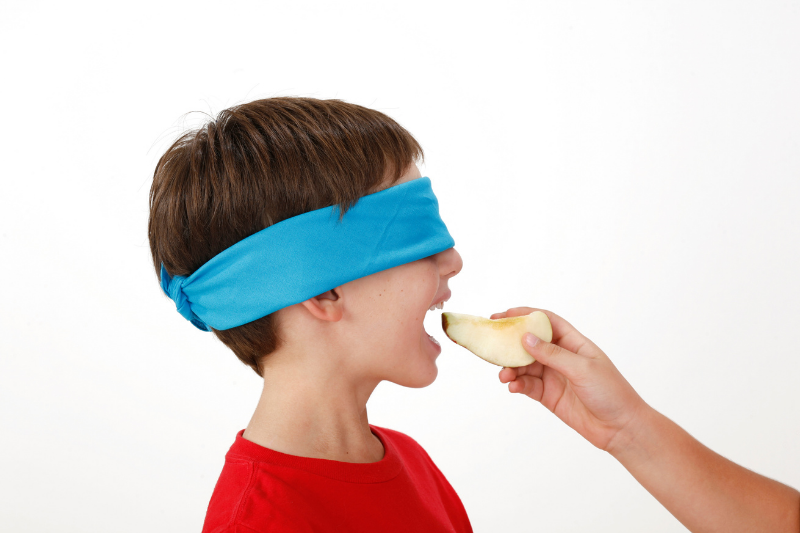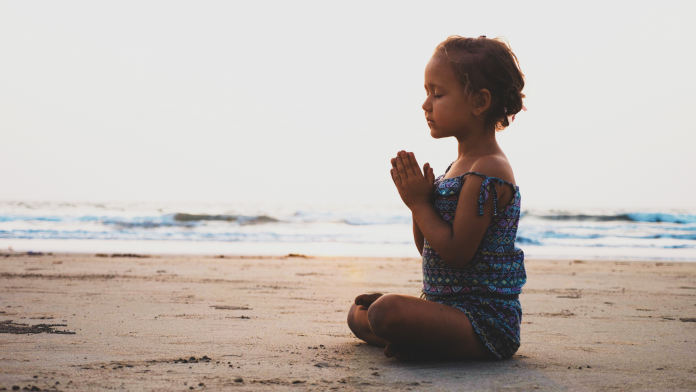Mindfulness is difficult to master, no matter what age you are. If it’s something you’re still struggling to learn yourself, then you may feel like it’s not worth trying to teach to your child.
But we can all benefit from a bit of mindfulness, and it might surprise you how easily your child picks it up.
Try using these five exercises and methods to not only teach your child healthy mindfulness practices but to also practice your own mindfulness.
1. Mindful Walks
This one’s easy enough for most parents and children. A mindful walk keeps you active, so it isn’t as difficult as, say, meditation or yoga, but it’s still a nice practice in mindfulness that can help ground you, help you destress, and help both you and your child appreciate your surroundings.

All you have to do is take a walk — that’s it.
Now, that doesn’t mean take a walk and look at your phone notifications the entire time, or to take a walk and complain the entire way about the bad day you had at work.
You’re just supposed to take a walk. That’s it. Enjoy the walk. Experience the walk.
Be silent and look around at your neighborhood. Listen to the sounds. Be in the moment.
2. Mindful Breathing
If you’ve ever done any kind of therapy for anxiety, depression, or a related mental illness, your therapist likely covered mindful breathing with you, as it’s one of the oldest grounding techniques in the book.
But beyond helping you avoid an anxiety attack or helping stop you from spiraling into a bad mood, mindful breathing can also just help you chill — something your child could benefit from too, most likely.
Have your child sit next to you, close their eyes, and breathe big. Ask them what it feels like. Tell them (and yourself) to imagine the breath flowing through their nostrils, over their head and down their body until it reaches their toes.
Do this about five times and ask them how they feel afterward (and make sure to do a mental check-in with yourself afterward, too).
3. Sensory Experiences
One easy way for children to start practicing mindfulness is to engage their senses — but only one sense at a time.
You can do this two ways, through fun games that ask them to use their sense of smell and their sense of taste.
Blindfold your child (or children — which might up the fun factor, as things get competitive) and feed them small bites of a small selection of foods. Ask them to really savor whatever it is they’re tasting (maybe it’s a bit of apple, a piece of cheese, or a raisin). Have them describe the taste, texture, and the emotion they experience.

The fun part is the challenge of having them guess whatever the food item is.
You can do a similar game with scents. Again, blindfold your child and have them smell a variety of strongly-scented items you have around your house. Maybe it’s a bit of chopped onion, a candle, or stick of cinnamon.
Whatever it is, again, ask them to really give it a good sniff and then describe not just what they smell, but what the smell makes them feel. Can they guess what it is they’re sniffing?
4. Journaling and Drawing Exercises
If you have an older child who can write or even draw fairly well, you can use journaling and drawing exercises to remind them to be mindful even when you’re not there to instruct them in mindfulness techniques.
Set aside a certain part of a day, something like a trip to see a relative or something as simple as their breakfast routine, and then ask your child to write about it or draw a picture of it at the end of the day. Ask them to get as specific as possible about what happened and also everything they felt and experienced during that moment.
5. Enlist a Little Help
If you’re having trouble engaging your child with one of the options above, you might just need to enlist a little assistance. Mindfulness apps and YouTube videos aimed at children can be a huge help, and sometimes kids just want an authority figure other than mom or dad to tell them what to do.
If the end result is mindfulness, don’t feel bad about turning on a video or handing your child your phone for a few moments.
Mindfulness is an Important Skill to Teach Your Children
The more accustomed to mindfulness that your child becomes at a young age, the easier it will be for them to practice mindfulness when they get older — which will be a great skill to have when it comes to combating things like stress and anxiety in adulthood. Teaching your children mindfulness now, even if it’s difficult, will have long-lasting benefits.
We hope you enjoyed this article about how to teach your child mindfulness. Here are other related articles you might also enjoy:
- How to Support a Parent of a Child with Special Needs
- Summer Productivity Plan for Kids- As simple as ABC’s!
- Getting Your Kids Active When They Hate Sports


